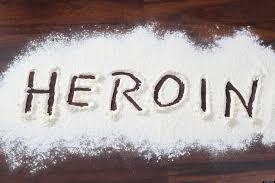DRUGS, INJECTING ROOMS, HARM MINIMISATION

Drug addiction is a disorder. When I worked in the Emergency Department years ago as an intern doing night shift, we would have frequent admissions of heroin overdose. They had all the cardinal signs: respiratory depression, pin point pupils and track marks on their forearms. Our role was reasonably straightforward. Protect the airway, ensure breath was moving, gain intravenous access and administer the antidote- naltrexone.

Oftentimes they would come out of their stupor in a rough way and needed restraint. Sometimes there were other drugs on board such as valium and often alcohol. After medical stabilisation we would get the social worker and psychiatric team involved, but sadly, some patients presented again and again. And even more sadly, some of them were brought in “D.O.A- Dead on Arrival”.

There was always a very sad story behind the scenes that we never really got to the bottom of. No drug addict wants to be a drug addict. The pain of life has taken them down that path. Depression is commonly an underlying problem. Everyone wants to experience happiness. In fact, the inherent longing within everyone is to experience something much more than just happiness. Deep bliss, inner peace, and knowledge of our essential nature is what our spirit thirsts for. Every human being has the capacity to experience all of that through work, through service, through devotion, or through intellect.

But the addict has lost touch with themselves. The normal means of experiencing their humanity has been lost. But they can get “it” temporarily through drugs. The depression lifts momentarily and euphoria is experienced. For a short while they don’t feel the pain of suffering and they experience a rush. But it is short lived, dangerous, and expensive. In some ways the yogi and the drug seeker seek the same thing, but the yogi “manufactures” those chemicals from within, whilst the drug seeker administers it from outside.

At present the City of Yarra is debating safe injecting rooms. One thing for certain is that we will not eradicate drugs through policing. Drug takers will find a way to get their fix and administer it wherever they can. In the process, they may leave syringes in laneways and overdose in the streets amongst regular residents. I have seen syringes in the street behind my office. The proposition is to have “injecting rooms” where clean syringes and needles are provided, sharps needle boxes are kept, and assistance can be provided in a more controlled environment in the event of an overdose. Additionally, services for rehabilitation maybe rendered.
It is a difficult debate and decision, but in balance, I feel that safe injecting rooms is a sensible course of action.
It’s a serious matter. Stay well.
Ranjit
